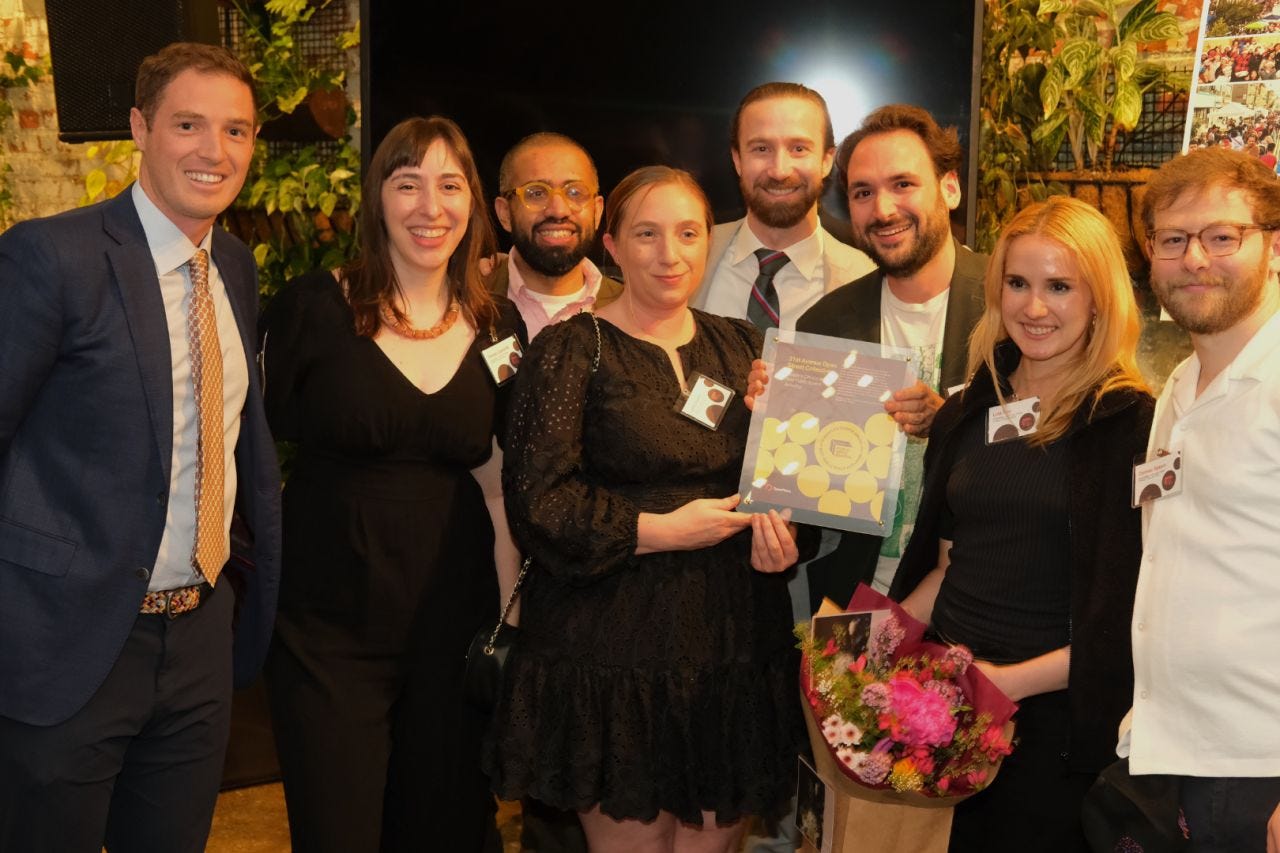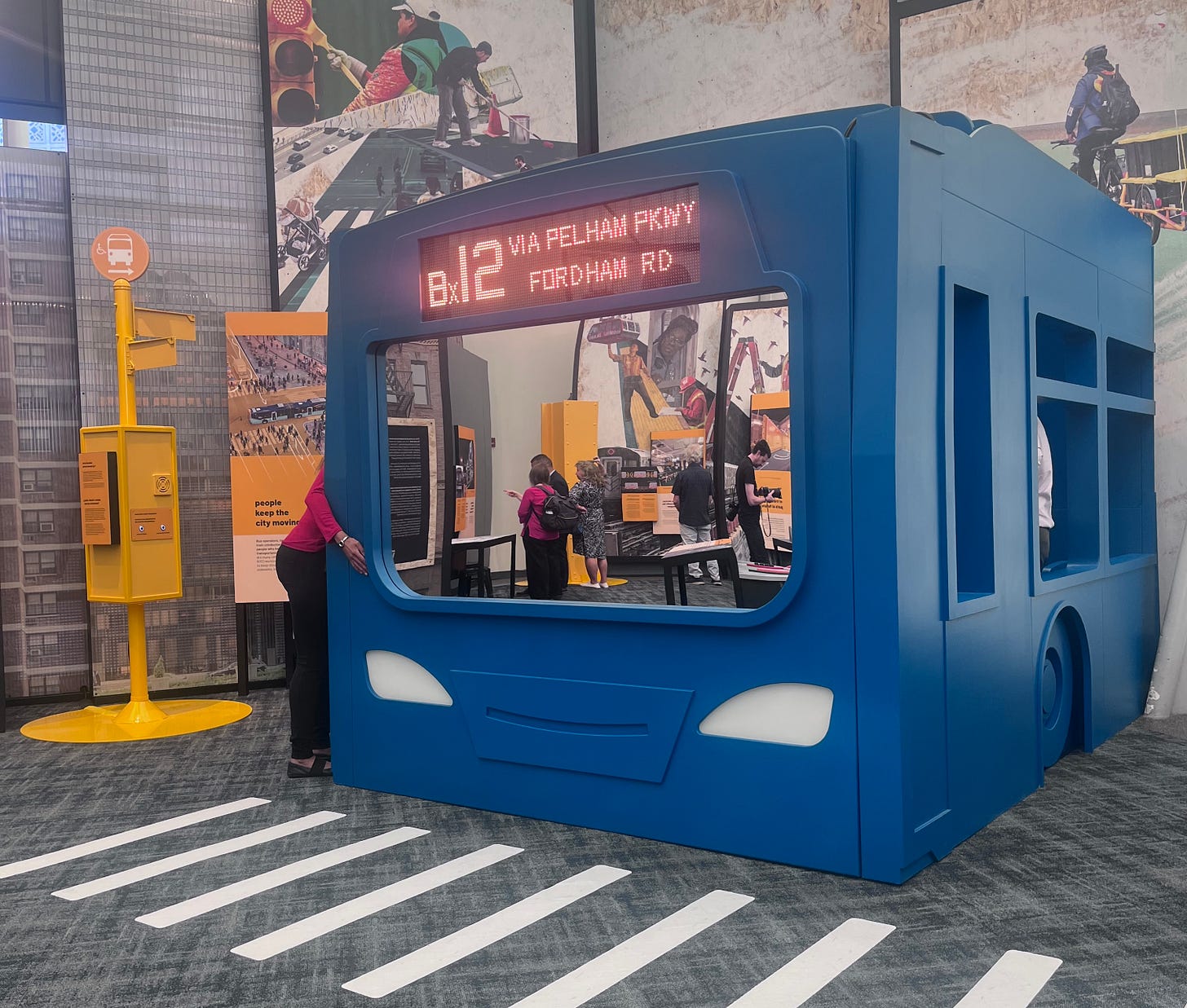হ্যালো*
And welcome to this newsletter.
It's where I (John Surico) talk each month about cities & their discontents: streets, climate, cultures, people, food, form, etc. This month, we cover:
- Saying goodbye to the seniors;
- The rise of serious injuries in New York City;
- Interregnum politics;
& much, much more.
There has always been a disconnect in solidarity between the media and the people who make it up. The industry thrives on the horse race: who has the scoop, who can outgun who, how to do better than everyone else. But in my decade-plus career as a journalist, I’ve found the reality on the ground to be quite different: most reporters, editors, photographers, and other creatives know and help one another, bonding over a career path few others understand. And that camaraderie is rarely reflected in the way the news is portrayed or reported out.
And that’s what I like about Substack: it’s one of the few platforms I’ve ever used where recommendations to read elsewhere are refreshingly encouraged. Today, most of my new subscribers (hey!) are coming from other newsletters that list Streetbeat (aw, thanks!), and I wanted to give them a quick shout-out here:
Sarah Barnes’ Along for the Ride;
Matt Choi’s Street Stack;
Chandler Forsythe’s Parks on a Bike;
Benjamin Schneider’s The Urban Condition;
Yasmin Güleç’s Between Bites;
Daryl Fairweather’s Hate the Game;
Elyssa Goldberg’s Bokeh;
Give them a follow 👍
Commencement

Teaching seniors at the tail end of their undergraduate journeys each year tends to be this moment of annual reflection for me.What world are they inheriting? In 2022, it was a pandemic that robbed them of memories and experiences crucial to your late teens and early twenties. In 2023, it was a fidgety recovery, made hazier by global instability. In 2024, it was college campuses tearing themselves apart over war and protest. And in 2025, it is, somehow, so much more.
I’m often nervous to admit this to the students point blank, but each year feels less clear than the last for them. I’ve shared this sentiment here: that history appears to be on some sort of parallel track, where not much makes sense anymore and the only constant is chaos. Now imagine having to translate that in a classroom setting—with guest speakers unsure of what advice to give aside from “be resilient,” topics that boil down to how crazy everything has become, and the news cycle as something we sigh over, even in a journalism class (!). It makes each semester’s end rough for me, if only because I’m left with few words to leave them with. What would I tell myself at this age? Good luck?!
But I derive such determination from their resolve. I started the semester with a proclamation that I wrote here in January: this would undoubtedly be the most uncertain period for New York City since the pandemic. (Do I have to explain why?) And in the months since, the cohort of 12 took that prompt—or, frankly, my own anxiety—and ran with it, delivering some of the most impressive and wide-ranging pieces I can remember in my six years of teaching.
We’ve got words on the cost of childcare in New York City. Zohran Mamdani’s insurgent bid for City Hall. The adult program at School of Rock. Federal cuts to public libraries, arts, and mentorship programs. The revival of indy bookstores in Brooklyn. The future of public housing. Gen Z’s influence on marketing, food, and fashion. And the fears of being an international student in the U.S. today.
It is a time for reflection, sure, but also a reminder—maybe most resoundingly to myself—when it’s all said and done: the kids will be alright. Congrats grads :)
Seriously off
I’ve been reporting about street safety for some time. Not only the life-saving fixes we can make to our roadways—which are on par with Russia for deadliest in the industrialized world—but also, the tangle of trends we’ve seen of late. At the end of 2023, I wrote about a sudden spike in cyclist deaths across New York City—a phenomenon pushed by faster e-bikes colliding with super-sized cars, yet rendered slightly less dramatic once you peered at it per capita. Three months later, I reported that New York City had just capped its safest year on record for pedestrians. What was left was a “huh?” moment all around.
And not just from me, trying to make sense of the statistics. But from readers, too. The top reaction I’d receive from any story I’d pen about New York’s ability to clamp down on traffic violence to some degree of success was genuine disbelief. How? The streets didn’t feel safer. (And frankly, I couldn’t argue with them.) People’s lived experiences were detached from headlines: near-misses with two-ton steel boxes zipping past them were still rampant, made even more dizzying with the rise of e-bikes. The zeitgeist seemed out of whack.
So when Transportation Alternatives (TA) reached out to me with never-before-seen data showing a spike in serious injuries—where someone’s life is permanently altered from a car crash—it stood out. This, to me, was an explanation for the discontent; that whatever way you cut it, New York City’s streets—and, by extension, America’s streets—are still causing severe bodily harm to far too many people, which amounts to one of the greatest aberrations of societal norms I can think of. We accept a system that kills every day as a cost of modern society—and until that changes, something is going to feel off.
But what was behind it? And what could we do to reverse the trend? I tried to answer those questions and more in a new feature for Bloomberg CityLab, whose talented graphics team parsed out TA’s tragic data. As one unnamed Streetbeat reader said, it reads as a “street safety greatest hits.” Enjoy the dive.
Much ado
The revelation last month that New York City’s 110th mayor, Eric Adams, wouldn’t run as a Democrat in this year’s election for his seat barely broke the news cycle. Most people assumed that already—or, rather, weren’t even asking. A tsunami of troubles—federal corruption charges, coziness to the White House, an inability to break New Yorkers out of the deeply held cynicism that has captured most of the country, if not the world—has rendered him New York’s most unpopular mayor on record. (There are other things, but I’ll leave it at that.)
For a while now, Adams has been a lame duck, American English for someone in power who’s stuck in place until time takes its toll. And that malaise leaves everyone in the policy world in a holding pattern. Each day, you’re sussing out what can feasibly happen between now and January, when the 111th mayor—who, almost definitely, will be the 111th man—comes along. You’re keeping tabs on who’s even still around to make change, now that his smartest deputies have jumped ship. And you’re fine-tuning your pitch for whoever comes next.
Not knowing how things will go—both locally, nationally or even globally, for that matter—is underpinning all the work we’re doing at the Center for an Urban Future around bolstering the city’s parks and open spaces. It was the backdrop of a recent testimony we gave at City Hall, where we told lawmakers that now is the time to dig in on sustainable funding streams, with so much up in the air. It loomed large over a recent panel I moderated with the North Brooklyn Parks Alliance, where any major rezoning is really the work of the next administration, not this one. And it will dominate every conversation around what New York City is—or, rather, wants to be—for some time.
We’ll have some shrivel of an answer soon. In the meantime: register to vote.
OSA: Accolades
No spoilers: this section next month will be reserved exclusively for the redesign of 31st Ave into a ‘bike boulevard,’ which is underway as we speak and will likely conclude by then. It’s lookin’ beautiful. (Naturally, I have a lot of photos.)
But this month—our first full one of the season—felt like a good time to (briefly) pat ourselves on the back for putting on a pop-up public space for five years straight. That’s 180 weekends, 360 days, and 2,880 hours of operation, led entirely by volunteers. Seeing the block transform in front of our eyes has been this remarkable reminder of what that work can do for a community.
Earlier this month, the 31st Ave Open Street Collective was nominated for—and then won—the best ‘Public Space Activator’ title at the Public Space Awards, a ceremony put on by livable streets outfit Open Plans that recognizes the individuals and organizations behind New York City’s thriving public realm. We now display the plaques on our table each weekend, to show neighbors what their support has meant to us and others. It was an honor, to say the least, folks.

Bright Side: Good Kid, Mad City
When someone says a child is at “an impressionable age,” there is science to back that up. A child taught literacy early on is more likely to read (and succeed) when they’re older. A child offered poor dietary choices early on is more likely to hold the same habits later in life. And a child exposed to trauma early on is more likely to suffer its consequences down the road. The list goes on and on.
As creatures of our environment, these experiences shape who we are—and so fostering opportunity and creativity at a young age seems like a no-brainer for public policy. (This is what makes universal pre-kindergarten so impactful.) It can show kids what’s possible for them, without the barriers society wants to put up. A bit from Sarah Silverman comes to mind: “Stop telling girls they can be anything they want when they grow up. I think it’s a mistake. Not because they can’t—but because it would’ve never occurred to them that they couldn’t.”
Over a year ago, I was asked to be an advisor on a new exhibit at the New York Hall of Science (NYSCI) called CityWorks, which opened to the public this month. Instead of projecting children into deep space or the deep sea, it instead asks them to look around. The city itself—this system of systems that, somehow, sustains 8.5 million people every day—is a living laboratory, from its parks and transit to its sanitation and sewage. It teaches children to see themselves as a small part of a much greater story—and imagine what their role could be in it.
As I toured the exhibit earlier this month—which, lemme tell you, is just so neat—I thought about this point a lot. What did we want to tell children was possible? How can they change cities? And why, for god’s sake, didn’t I have this as a kid?
On the Radar
No OTR this month—but we may have been one of the few who made it through The Handmaid’s Tale’s six-season run, and while it was heart-wrenching to watch, I’d argue that we need more shows like it right now. Same goes for Andor.
Streetbeat Gig Board
The Metropolitan Transportation Authority (MTA), America’s largest mass transit body, is looking for a UX designer. (New York, NY)
Help develop the soooooounndscapeeeeee at The New York Botanical Garden. (The Bronx, NY)
Street Lab, which designs, equips and outfits public spaces around New York City, is hiring for a few positions. (New York, NY)
Speaking of neat design work: go fabricate some stuff at CultureHouse, a placemaking outfit (and Streetbeat vet). (Somerville, MA)
Shout-out to longtime friend and colleague Michelle Smawley for regularly sharing climate media/comms jobs, explicitly for this newsletter. Thread here, thread here, and thread over there. (All over the place)
***






